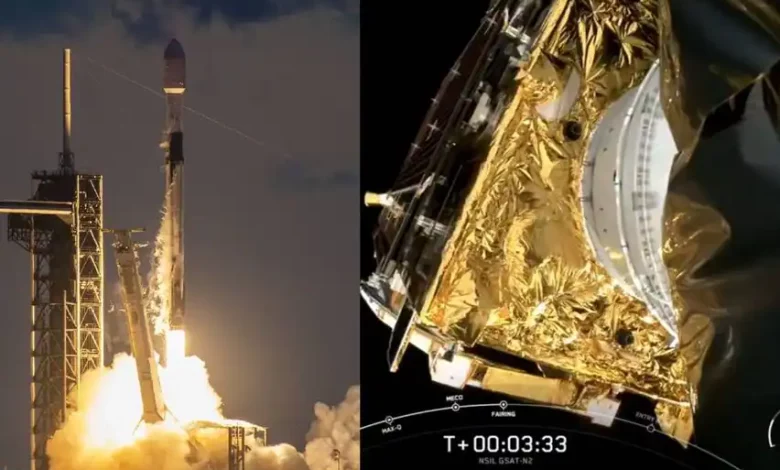
India’s Game-Changing Satellite: GSAT-N2 Launched by SpaceX to Connect Remote Regions and Skies.
In a significant milestone for India’s space technology, the Indian Space Research Organisation (ISRO) has successfully launched its GSAT-N2 communication satellite from Cape Canaveral, Florida, with the help of Elon Musk’s SpaceX.
The GSAT-N2 satellite, weighing a hefty 4,700 kilograms, is designed to provide high-speed data and internet services to remote regions across the Indian subcontinent, as well as enable in-flight connectivity for aircraft traversing the country’s airspace.
The launch of the GSAT-N2 marks a notable achievement, as ISRO’s own launch vehicle, the Mark-3, is capable of lifting up to 4,000 kg into a geostationary transfer orbit.
Dubbed GSAT-20 by the Indian space agency, the satellite is a high-throughput communication satellite operating in the Ka-band frequency range. It was developed by NewSpace India Limited (NSIL), the commercial arm of ISRO under the Department of Space.
“NSIL’s GSAT-N2 High-throughput (HTS) Communication satellite successfully launched from Cape Canaveral, USA on 19th November 2024,” the agency proudly announced on social media platform X.
According to ISRO, the GSAT-N2 satellite has a mission lifespan of 14 years and is equipped with 32 user beams, including 8 narrow spot beams covering the Northeast region and 24 wide spot beams for the rest of India.
“This homegrown satellite, once operational, will address the significant gap in in-flight Internet connectivity over India on the global map,” said Dr. M Sankaran, Director of the UR Rao Satellite Centre in Bengaluru.
Dr. Sankaran further emphasized the satellite’s significance, stating, “This is India’s highest throughput satellite and the only one exclusively operating in the highly sought-after Ka-band.”
Now, international flights entering Indian airspace were required to disable their internet services, as the country previously did not allow in-flight connectivity. However, recent regulatory changes have paved the way for Wi-Fi access on aircraft flying at altitudes above 3,000 meters, provided that electronic devices are permitted for use onboard.
The launch of the GSAT-N2 satellite is poised to revolutionize India’s in-flight connectivity landscape, allowing passengers to seamlessly access the internet while traversing the country’s skies.
This milestone collaboration between ISRO and SpaceX showcases India’s growing prowess in the global space arena and its commitment to bridging the digital divide, especially in remote regions and the aviation sector.



